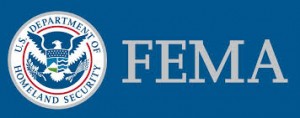FEMA Playing a Greater Role in State Disasters than Intended
< < Go Back
The Federal Emergency Management Agency (FEMA) is considered by many to be the nation’s “first responder” in the event of a disaster, but a new report from Chris Edwards of the Cato Institute contends the agency is supposed to be a financial aid organization only — not to replace state and local responders. That, however, has not been the case, as FEMA has become more involved in handling state disasters.
Under the Stafford Act of 1988, the federal government is only supposed to involve itself in state disasters if responding to the disaster is beyond the state’s capability. But in practice, says Edwards, the federal government routinely agrees to declare state disasters “major disasters” so that they qualify for aid from FEMA. While just 51 disasters were declared in the 1970s, 127 were declared in the 2007s. Already in the 2010s there have been 139 disaster declarations. What’s the problem? Edwards explains:
– Federal intervention creates a great deal of paperwork which inhibits recovery and response.
– Residents of non-dangerous states are forced to subsidize those who choose to live in more dangerous locations.
– States and localities are disincentivized from preparing for disasters themselves, because they expect federal monetary aid. As a result, states have cut disaster preparedness budgets.
Edwards explains how FEMA has actually obstructed local relief efforts, despite that local actors are often better equipped to handle disasters because they are familiar with the area. Moreover, the program has been plagued with waste: a GAO report estimates that at least $1 billion in Hurricane Katrina aid payments were invalid, and a report from the Associated Press found that individuals received up to $1 billion in taxpayer funds by claiming to have lived in homes that did not actually exist before the hurricane.
More From NCPA:




